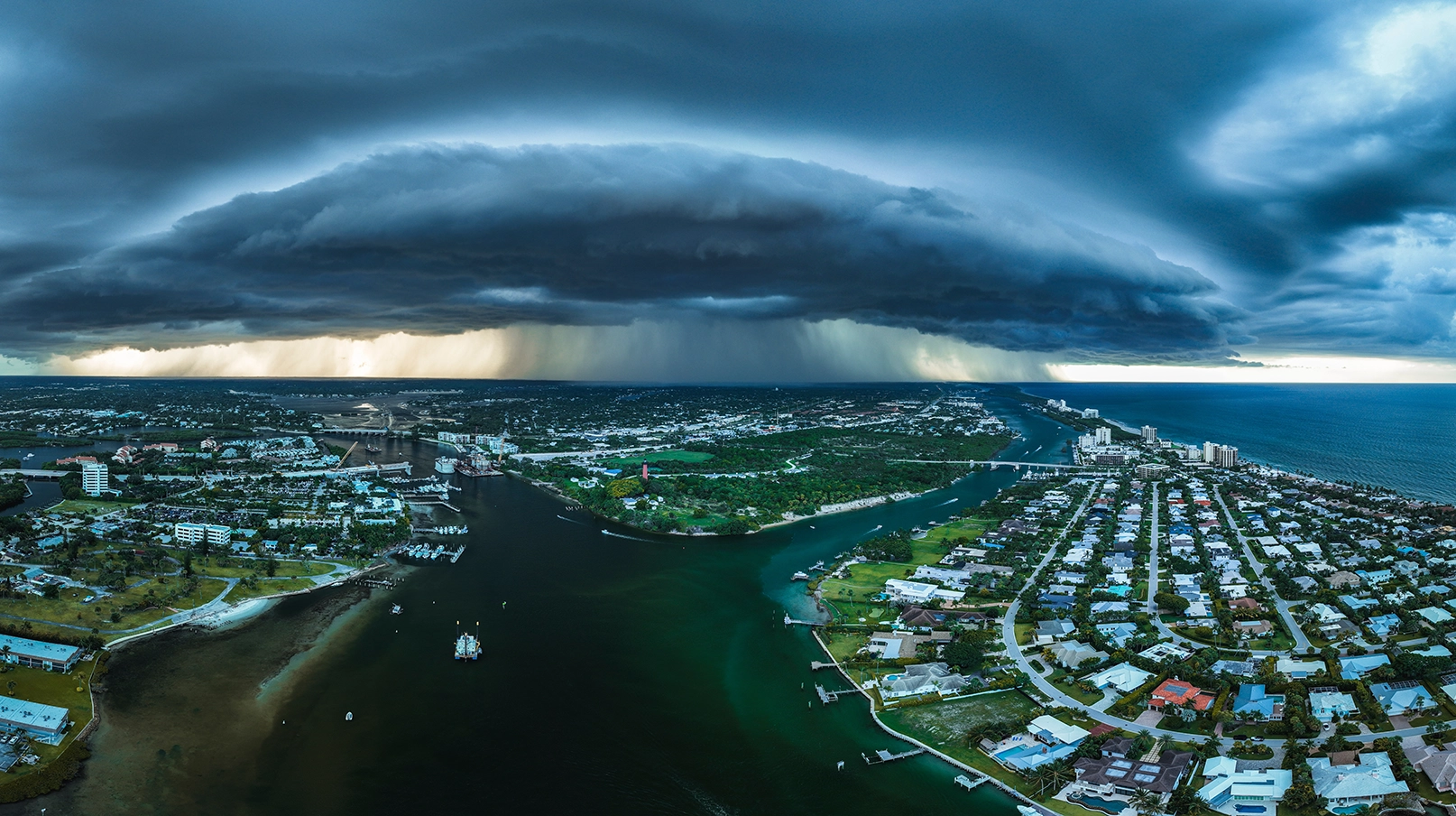By: Dianne Crocker, LightBox research director and Alan Agadoni, senior VP, LightBox EDR
In the early months of 2025, the impact of natural hazards and extreme climate conditions is bringing a renewed sense of urgency to government and private industry initiatives aimed at better assessing and mitigating risks to commercial and residential real estate. The devastating events of 2024 and early 2025 underscore the critical need for comprehensive property resilience assessments (PRAs) and adaptive strategies.
In their recent column for EM Magazine, LightBox’s Dianne Crocker and Alan Agadoni break down the growing risk of climate-related events, various government responses and industry standard practices, and the critical role of environmental professionals in assessing a property’s exposure to future risk. Here are five key takeaways for CRE professionals navigating this evolving landscape.
1. Climate Disasters Are Surging—and So Is Financial Exposure
The U.S. experienced $27 billion in losses due to climate and weather disasters in 2024 alone, setting a new high and underscoring the rising vulnerability of our built environment. A report by LightBox, The Environmental Crisis After Wildfires: Unseen Threats in Recovery, estimates that the Palisades fire impacted more than 10,000 structures, including more than 200 businesses. More than 700 properties in the impact zone were flagged for likely contamination from hazardous materials, including 150 sites with underground storage tanks.
From hurricanes and floods to wildfires and tornadoes, no region is immune. These events are causing not only physical property damage but also long-term financial consequences for owners, insurers, and investors. As losses mount, climate risk is no longer abstract or remote. Physical climate risk and insurance risk are already on the minds of investors and lenders.
2. Insurability Is Becoming a CRE Deal-Killer
More than $1 trillion in coastal real estate could become uninsurable as sea levels rise and extreme storms grow more severe, according to a recent projection from the Congressional Budget Office (CBO). Insurance premiums are rising sharply, deductibles are growing, and some markets are seeing reduced or nonexistent coverage availability. For CRE stakeholders, insurability is quickly becoming a make-or-break factor in transactions, financing, and valuations.
3. Governments Are Responding with Resilience-First Policies
Federal agencies like HUD and state leaders in places like Connecticut and Florida are advancing new policies that require climate risk to be factored into land use, development, and funding decisions. The Northeast Florida Regional Council (NEFRC) and the Resilient First Coast (RFC) Collaborative just released a joint Regional Resiliency Action Plan to encourage governments in the region to look at large-scale measures, such as strengthening or relocating infrastructure from coastal areas affected by sea-level rise, building infrastructure able to withstand more extreme weather conditions, and transforming surface infrastructure to mitigate extreme heat and stormwater flooding. These initiatives signal a growing shift toward integrating resilience into the regulatory fabric of real estate—something that’s likely to expand in the years ahead.
4. ASTM’s New PRA Standard Brings Structure to Resilience
ASTM’s new Property Resilience Assessment (PRA), designed to be used in concert with a more traditional Phase I environmental site assessment, provides standard provides a clear, three-stage framework for evaluating a building’s exposure to hazards and identifying mitigation strategies. For the first time, CRE professionals have a formalized process—complementary to Phase I ESAs and PCAs—to assess climate risk at the asset level. This gives lenders, investors, and consultants a valuable new tool to evaluate risk more consistently and proactively, noted Holly Neber, CEO of AEI Consultants and chair of the ASTM task group that developed the PRA. “Physical climate risk and insurance risk is already on the minds of investors and lenders due to the increasing frequency and severity of extreme weather events in recent years. The growing need for environmental due diligence that is climate informed and a market that values resilience as a property attribute will drive more investments to make our buildings, infrastructure, and communities better able to withstand the stresses of severe weather events.”
5. Resilience Is Now a Market Differentiator
As awareness grows, resilience is becoming more than a risk management strategy—it’s a competitive advantage. Developers are designing buildings to withstand higher stress, lenders are factoring climate data into underwriting, and consultants are expanding services to include resilience assessments. The market is moving toward recognizing resilience as a core component of value, not just an afterthought.
To explore PRAs, evolving regulations, and what’s next for resilience-driven due diligence, check out the full article in the April edition of EM Magazine—turn to page 20.
NOTE TO READERS
This blog is an excerpt from the Inside the Industry column authored by Dianne Crocker, LightBox’s research director, and Alan Agadoni, senior VP, LightBox EDR published monthly by the Air & Waste Management Association in its EM magazine. The column covers a mix of timely business, strategic, and technical topics impacting the world of environmental management.
The full article appears in the April 2025 issue of EM Magazine, a copyrighted publication of the Air & Waste Management Association, and is accessible in its entirety in the full-issue PDF that can be downloaded and printed, or via AWMA’s online, interactive EM flipbook.
